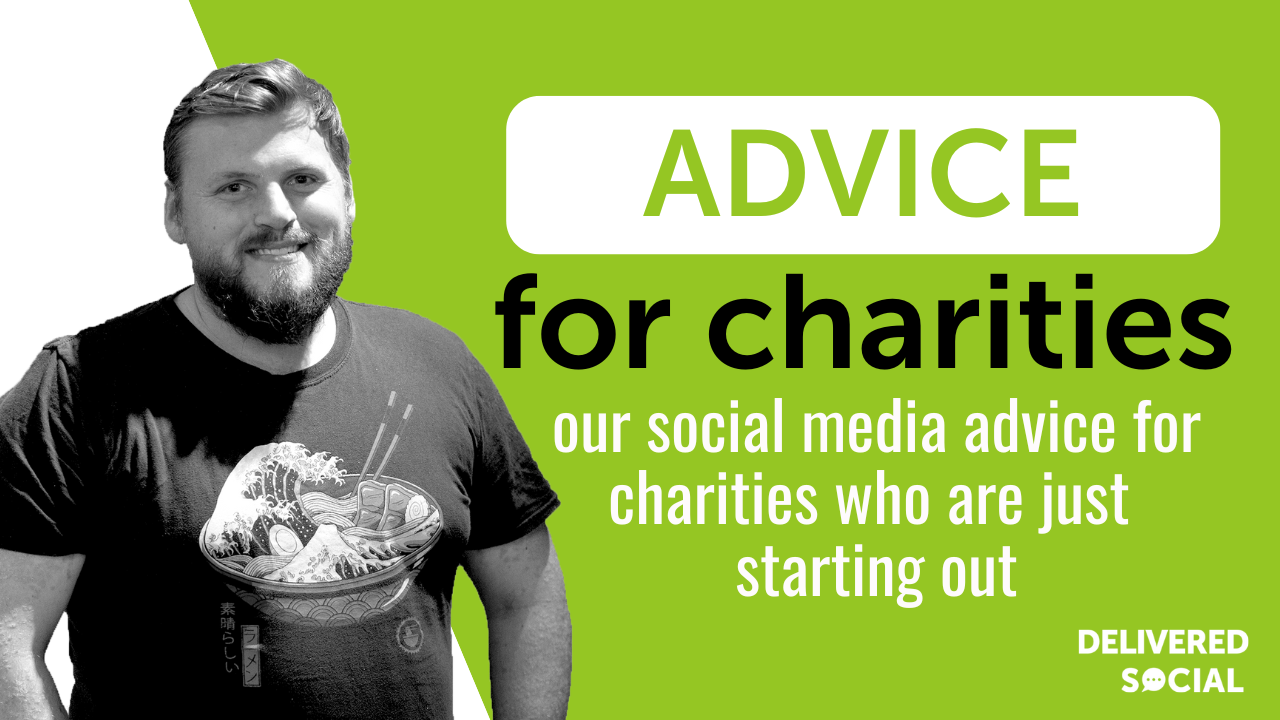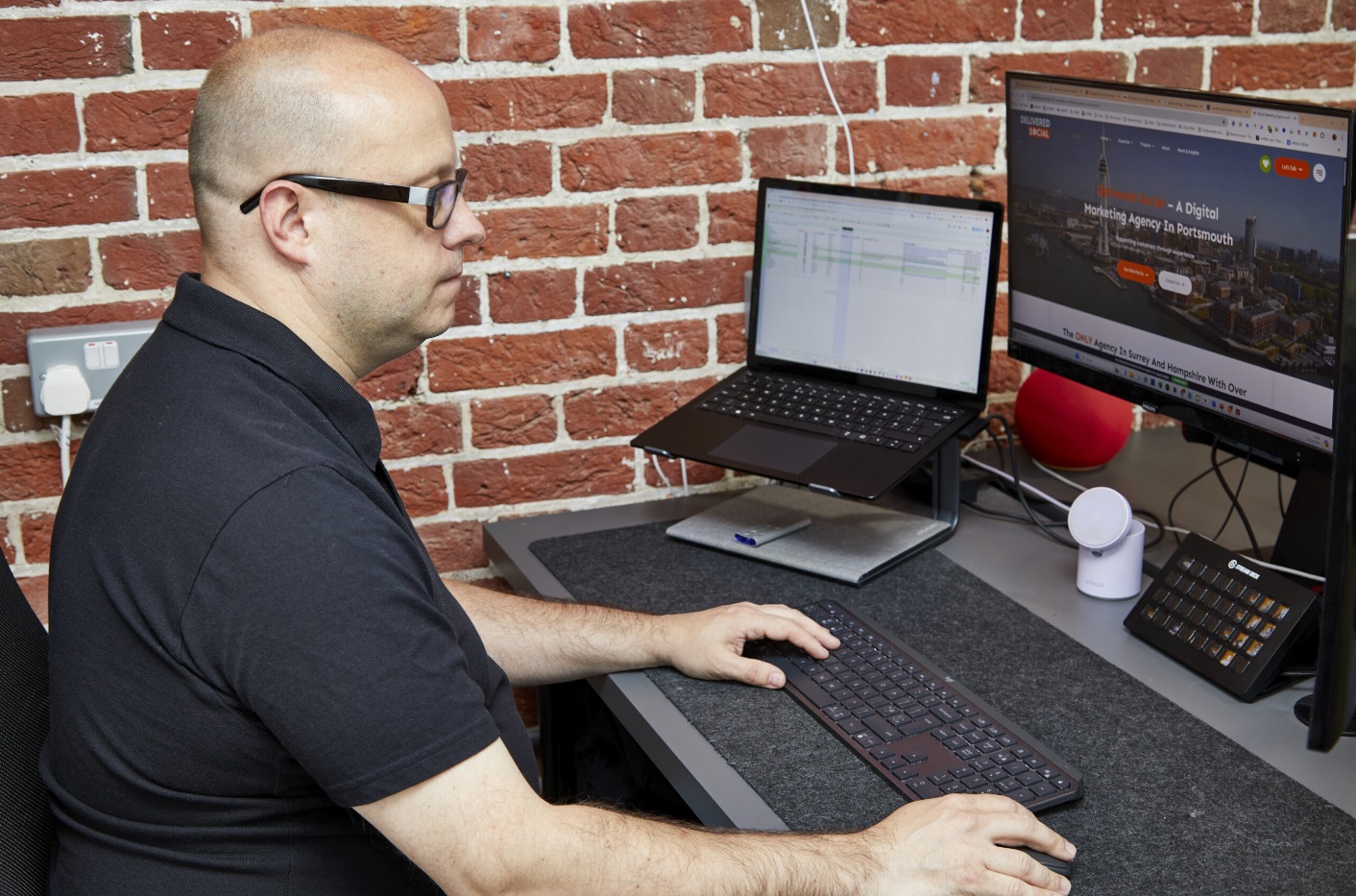
Running a charity can be an immensely rewarding endeavour, but with countless causes vying for attention and funds, standing out from the crowd can be a challenge. This is where the power of social media comes into play. Here’s our some of our social media advice aimed at charities starting out, so you can harness these platforms to amplify your impact and grow your charities reach on our online world.
Here’s the different types of Social Media Advice for Charities we’re going to cover:
- Understanding your audience
- The Art of Storytelling
- Consistency is Key
- The Importance of Engagement
- The Power of Hashtags
- Utilising Social Media Advertising
- Building Collaborations and Partnerships
- The Role of Performance Tracking
- How Does Social Media Affect Charities?
Understanding Your Audience: Know Who You’re Talking To
One of the foundational pieces of social media advice for charities revolves around understanding your audience. Your audience is the group of individuals that your message needs to resonate with, the people whose support you want to galvanise for your cause. A thorough understanding of your audience forms the bedrock of your social media strategy.
In the world of social media, “audience” takes on a broader meaning. It includes your followers, but it also extends to potential followers who share similar interests, as well as those who could benefit from or contribute to your cause. Understanding your audience involves a deep dive into their demographics – age, gender, location, education, profession, and more.
Demographics are essential, but they just scratch the surface. You need to delve deeper and understand their psychographics as well. What are their interests? What are their values? What do they care about? Are they more responsive to emotional appeals or do they prefer hard facts and statistics?
With the wealth of information available through social media analytics and insights, you can gain a comprehensive understanding of your audience’s online behaviour. When are they most active online? What type of content do they engage with the most? What social media platforms do they prefer? All of this data can provide invaluable insights into how you should craft your social media strategy.
Once you have a clear picture of your audience, you can tailor your content to suit their tastes, preferences, and online behaviour. Personalising your approach makes your audience feel seen and heard, fostering a deeper connection with your charity. It allows you to create content that resonates on a deeper level and sparks meaningful conversations.
Understanding your audience also allows you to identify key influencers and stakeholders within your community. These are the individuals who can amplify your message and broaden your reach. Engaging with these influencers and stakeholders can significantly boost your social media impact.
Understanding your audience is more than just knowing who they are. It’s about understanding their interests, their motivations, their online behaviour and their preferences. This insight enables you to personalise your approach, create content that resonates, engage more effectively, and ultimately, maximise your impact. It’s an ongoing process, requiring constant attention and adjustment as your audience evolves, but the rewards are well worth the effort.
The Art of Storytelling: Share Your Unique Narrative
Charities aren’t faceless entities; they’re driven by powerful stories of change and hope. Sharing your unique narrative in an authentic and compelling way will help you connect with your audience on an emotional level, driving engagement and support for your cause. Use a variety of formats – blog posts, photos, videos, infographics – to tell your story and illustrate the impact of your work.
Consistency is Key: Maintain Regular Social Media Activity
The social media sphere is bustling with activity, and maintaining visibility can be a challenge. Regular and consistent posting will keep your charity top of mind for your followers. A well-planned content calendar will help you maintain a consistent posting schedule while ensuring your content remains diverse, engaging and relevant.

The Importance of Engagement: Foster a Dialogue with Your Audience
Social media is more than a broadcasting platform; it’s a two-way communication channel that fosters dialogue and engagement. This aspect of conversation is one of the most essential pieces of social media advice for charities, underpinning the establishment of meaningful relationships with your audience.
Engagement is a broad term, encompassing various forms of interaction such as likes, comments, shares, direct messages, and more. These interactions not only indicate that your audience is paying attention, but also provide insight into their perceptions and sentiments towards your cause.
However, fostering engagement goes beyond merely observing these interactions; it requires active participation. Responding to comments, for instance, acknowledges your audience’s input and makes them feel valued. Addressing concerns or questions promptly not only builds trust but also demonstrates your charity’s transparency and accountability. In the same vein, thanking followers for their support and donations fosters a sense of community, showing appreciation and reinforcing the impact of their contribution.
Beyond this, engagement can take a more proactive form. Charities can encourage audience participation through various means such as user-generated content, contests, or polls. You can involve your audience in decision-making processes, ask their opinions on future projects or simply seek their feedback on your work. This active form of engagement promotes a sense of shared ownership and involvement in your cause, strengthening the bond between your charity and its supporters.
Engaging your audience also provides invaluable insights into your social media strategy. What type of content triggers the most engagement? When is your audience most responsive? These insights can guide your content strategy, helping you produce more effective and impactful content.
In essence, engagement is the heartbeat of your social media presence. It breathes life into your charity’s online persona, transforms followers into supporters, and builds a vibrant, supportive community around your cause. It requires consistent effort, genuine interaction, and a commitment to nurturing relationships, but its power to amplify your impact makes it a pivotal element in your social media strategy.
The Power of Hashtags: Boost Your Visibility
Hashtags are integral tools in the social media landscape. They categorise content, making it easily discoverable by a larger audience. Researching and creating relevant, unique hashtags can significantly boost your visibility and drive engagement with your posts.
Utilising Social Media Advertising: Reach Your Target Audience
As an integral part of any robust social media strategy, advertising holds considerable potential for charities. In a digital landscape where organic reach can be limited, social media advertising serves as an effective tool to extend your message to a wider, yet targeted, audience.
While producing engaging content is crucial, ensuring it reaches the right people is equally important. Social media platforms offer sophisticated targeting options, enabling your charity to reach individuals based on demographics, interests, behaviours, and even their connections to your existing followers.
Advertising can help promote your key messages, upcoming events, or campaigns directly to those who are likely to be interested in your cause. This precision makes your advertising spend more efficient and the results more impactful.
Another advantage is the ability to track and measure the results of your ads. You can gain insights into the number of people reached, the interactions made, and even the donations or sign-ups attributed to your ads. This data can inform future advertising efforts, improving their effectiveness over time.
Utilising social media advertising can help charities cut through the digital noise, reach their target audience, and achieve their objectives more efficiently. It’s an investment that, when used strategically, can yield significant returns.
Building Collaborations and Partnerships: Amplify Your Impact
Partnerships with influencers, corporate sponsors or other charities can expand your reach, resources and impact. Collaborations can take various forms – joint campaigns, fundraisers or events – and can provide fresh perspectives, shared resources, and enhanced credibility.
The Role of Performance Tracking: Refine Your Strategy
In the world of social media, where trends shift rapidly and user behaviour continually evolves, performance tracking is not just beneficial – it’s vital. Performance tracking allows you to assess your social media activities objectively and make data-driven decisions. It forms a critical part of our social media advice for charities.
At the core of performance tracking is the identification of Key Performance Indicators (KPIs). KPIs are the metrics that align directly with your charity’s goals. Are you aiming to raise awareness, boost donations, or engage your community? Your goals will dictate your KPIs.
Typically, these can include engagement metrics such as likes, shares, and comments, follower growth, website traffic generated from social media, the number of donations or sign-ups stemming from your social media activities, and much more. Each of these metrics offers a unique insight into the effectiveness of your social media strategy.
Performance tracking also allows you to understand your audience better. You’ll see who is engaging with your content, when they’re engaging, and what kind of content triggers engagement. This understanding allows you to refine your content strategy and ensure it remains aligned with your audience’s preferences and behaviours.
Furthermore, performance tracking can also highlight your best-performing content. By identifying the characteristics of this content – be it the format, topic, or timing – you can produce more of what works best and improve your overall content strategy. This understanding can significantly enhance your content’s impact and engagement rates.
Another critical aspect of performance tracking is A/B testing. This process involves testing two versions of a post to see which performs better. This method provides direct, actionable insights into what resonates with your audience, helping you continuously refine your approach.
Additionally, performance tracking provides an opportunity to monitor and respond to changes in your social media environment. Has there been a sudden drop in engagement? A decrease in followers? These changes could signal shifts in user behaviour, platform algorithms, or even perceptions towards your charity. Swiftly identifying and responding to these changes can mitigate their impact and ensure your strategy remains effective.
In conclusion, while setting up a successful social media presence for your charity may initially seem daunting, with a well-planned strategy and persistent effort, these platforms can become powerful tools in promoting your cause and driving impactful change. If you’re still unsure why not checkout our blog on social media course for charities
Interested In Working Together?
Introducing Delivered Social. We’re The Most-Rated Digital Agency In Surrey & Hampshire – We’ve Got To Be Doing Something Right.
Delivered Social is a digital marketing agency with one mission—to help businesses grow. We’re famous in Guildford and Portsmouth for our social clinics. We believe in free advice. We build lasting relationships because our team prides itself on being helpful, which our clients appreciate.
If you are looking for a new website or an agency to manage your social media presence, we can help.
If you need something slightly different, here's a super handy list of all our services, or you can always email us.


















